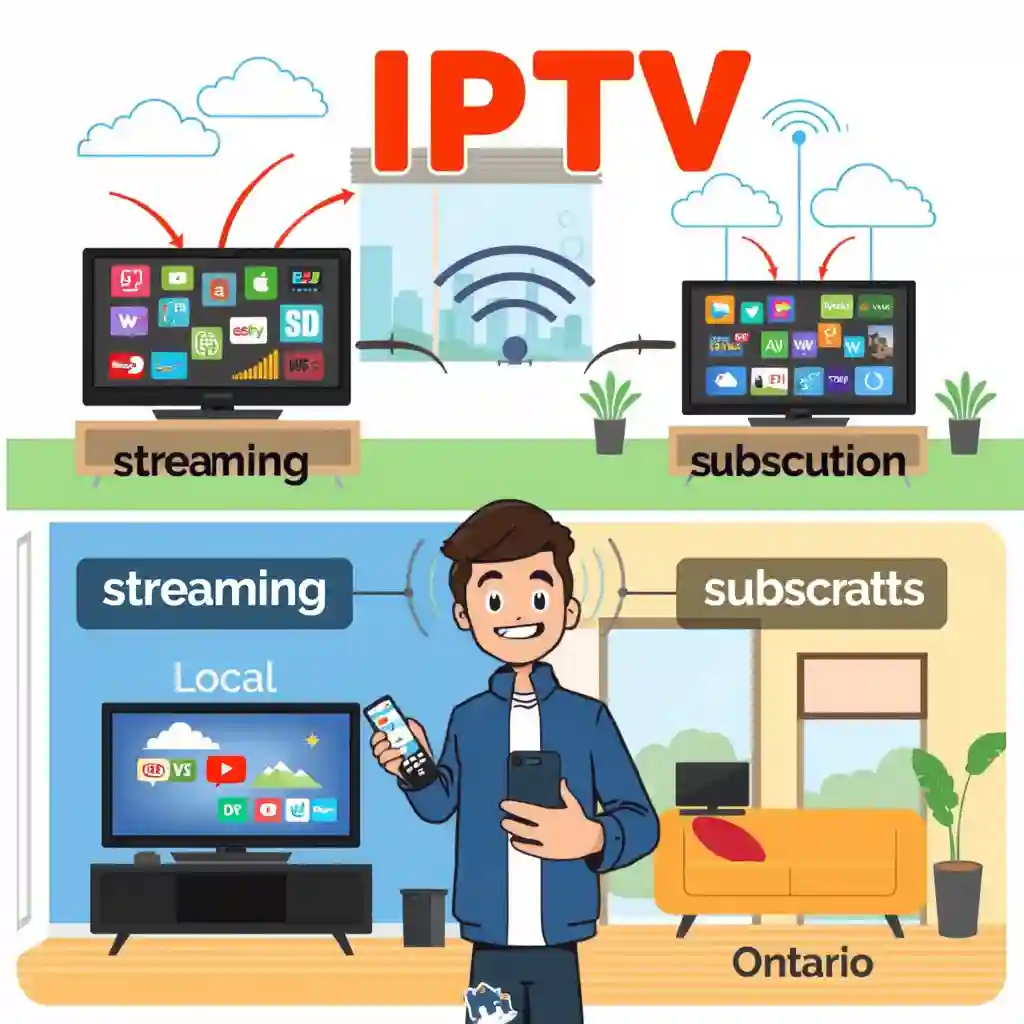Introduction
As IPTV continues to revolutionize how we consume television in Ontario and across IPTV Canada, many users are curious about what goes on behind the scenes. IPTV, or Internet Protocol Television, delivers TV content over the internet instead of traditional satellite or cable formats. But how exactly does this system operate?
In this article, IPTV Ontario breaks down the structure of IPTV and explains how it’s optimized to deliver content efficiently across Canada.
1. Content Acquisition in IPTV Canada
The IPTV process begins with sourcing high-quality content. This content can come from a variety of places:
-
Live TV channels (sports, news, entertainment)
-
Video on demand (movies, shows, documentaries)
-
Local and international broadcasters
In Canada, providers often acquire licensed content tailored to both regional and multicultural audiences. Moreover, partnerships with global networks help bring in a wide variety of channels.
2. Encoding and Transcoding in IPTV Canada
Once the content is acquired, it must be processed. First, it goes through encoders that convert it into digital format. Then, transcoders compress and optimize it into multiple resolutions and formats, making it accessible on different devices and internet connections:
-
SD (Standard Definition)
-
HD (High Definition)
-
Full HD & 4K
As a result, users across IPTV Canada can enjoy smooth, high-quality streaming experiences—even on slower networks.
3. Content Storage (VOD Systems)
For video-on-demand services, the optimized content is stored on secure VOD servers. These servers use advanced content delivery systems to ensure rapid streaming.
Furthermore, VOD platforms categorize and index content for faster searchability. In IPTV Canada, this is a key advantage over traditional cable systems, which often lack flexibility.
4. Middleware: The Brain of IPTV
At the heart of every IPTV system lies middleware. This is the software layer that connects users to the content. It handles:
-
User authentication
-
Subscription control
-
Channel access
-
EPG (Electronic Program Guide)
-
Parental controls
Importantly, middleware in IPTV Canada is customized to meet bilingual and multicultural needs. Therefore, viewers can enjoy content in both English and French, along with a variety of international options.
5. Content Delivery Network (CDN)
Next, content must reach users quickly and reliably. That’s where Content Delivery Networks come in. CDNs consist of distributed servers that ensure fast and stable streaming, regardless of a viewer’s location.
In fact, for users across IPTV Canada, CDNs reduce buffering and loading times by delivering content from nearby servers instead of a single central hub.
6. User Interface (Apps & Set-Top Boxes)
Finally, users access IPTV content through intuitive interfaces:
-
IPTV apps (Android, iOS, Smart TV)
-
MAG or Android boxes
-
Web-based IPTV players
A user-friendly experience is essential. That’s why IPTV services in Canada invest in sleek design and responsive performance. In addition, features like favorites, watch history, and personalized recommendations enhance usability.
Conclusion
In summary, the structure of IPTV is a sophisticated system designed for speed, scalability, and convenience. It involves multiple layers—from content acquisition and transcoding to CDN distribution and end-user experience.
As IPTV Canada grows, so does the demand for reliable, high-quality streaming. At IPTV Ontario, we make sure every part of this system is optimized for your satisfaction.
Whether you’re streaming a live hockey game or watching an on-demand series, now you understand the technology that powers your screen.
Looking for the Best IPTV Canada Experience?
Visit our Plans & Pricing page or contact the IPTV Ontario support team for expert recommendations.

